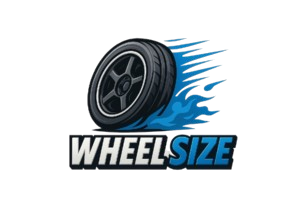Introduction
The Acura Integra Type S (DE5) is a sporty small car that focuses on performance and combines luxury, agility, and sheer driving fun. People have been faithful to the Type S since it came back in 2023, and for good reason. It’s not surprising that fans are going all out to customize and upgrade every part of it, from the wheels and tires to the aggressive styling, turbocharged power, and tight handling.
To get the maximum performance and look out of your Integra Type S, you need to make sure the wheels fit correctly. It’s not enough to just put on a set of aftermarket wheels; you need to know how tire size, rim width, offset, bolt pattern, and hub bore affect the way your car rides, handles, and even its safety. This guide gives you the exact factory wheel and tire specs for the 2023–2026 Acura Integra Type S. This way, you’ll know exactly what works whether you go with OEM or upgrade.
Let’s talk about the important details: the optimum tire size, rim size, bolt pattern, center bore, and offset. All of these things are important for keeping your Integra Type S running at its finest.
Read about: Acura Integra wheel fitment
Overview of Acura Integra Type S (DE5) [2023–2026]
The Acura Integra Type S (chassis code DE5) came out in 2023 and will be available until at least 2026, with the same mechanical specs and performance tweaks. The Type S has a better engine, a wider track, and a better suspension than the regular Integra. This makes choosing the right wheels even more critical.
Acura has not changed the factory wheel and tire arrangement in any of these four model years. That implies the identical fitment data works for both the 2023 and the 2026 models. This constancy is important for anyone who wants to buy wheels or tires without worrying about whether they will fit.
This is what you have to work with: The original rim is 19 inches in diameter and 9.5 inches width (9.5Jx19). It is covered in 265/30ZR19 93Y tires. The bolt pattern is 5×120, the center bore is 64.1 mm, and the factory offset is +60 mm (ET60). These sizes are centered on performance, with an emphasis on grip and stability.
The engineers at Acura thought that this baseline was the best for tweaking the Type S’s suspension. If you go too far off of it, it can change the geometry of your alignment, the space between your brakes, and even the space between your fenders. It’s crucial to know these stats whether you’re contemplating about track-day tires or a cosmetic update.
Acura Integra Type-S (DE5) [2023–2026] Wheel & Tire Specifications
| Model Year | Tire Size | Rim Size | Offset (ET) | Center Bore | Bolt Pattern | Thread Size | Torque (Nm) | Tire Pressure (Front/Rear) |
| 2023 | 265/30ZR19 93Y | 9.5Jx19 ET60 | 60 | 64.1 mm | 5×120 | M14 x 1.5 | Unknown | 2.8 / 2.3 bar |
| 2024 | 265/30ZR19 93Y | 9.5Jx19 ET60 | 60 | 64.1 mm | 5×120 | M14 x 1.5 | Unknown | 2.8 / 2.3 bar |
| 2025 | 265/30ZR19 93Y | 9.5Jx19 ET60 | 60 | 64.1 mm | 5×120 | M14 x 1.5 | Unknown | 2.8 / 2.3 bar |
| 2026 | 265/30ZR19 93Y | 9.5Jx19 ET60 | 60 | 64.1 mm | 5×120 | M14 x 1.5 | Unknown | 2.8 / 2.3 bar |
OEM Wheel and Tire Specifications
Tire Size
The Integra Type S comes with 265/30ZR19 93Y tires for all model years from 2023 to 2026. This size strikes a good mix between grip and ride comfort. The 265mm width gives you a lot of touch with the road, which is great for putting the Type S’s power to the pavement. The “ZR” speed classification says these tires are made for fast speeds, and the 30 aspect ratio keeps the sidewall short for snappy handling.
The “93Y” at the end tells you how much weight and speed the thing can handle. A load index of 93 means that each tire can hold up to 650 kg, which is enough for a small performance car. The “Y” speed rating means the tires can manage speeds above 186 mph. You probably won’t be going that fast every day, but it shows that the tires are made for excellent performance.
If you want to keep your speedometer accurate and your riding characteristics faithful to the factory setting, you should stick with this precise size when you buy new parts. You can make things broader or higher, but you have to plan ahead to minimize problems with friction or clearance.
Rim Size
The Integra Type S comes with 19-inch wheels that are 9.5 inches wide (9.5Jx19). The “J” stands for the flange profile, which is normal for most cars. The Type S’s suspension and body were made to fit a 9.5-inch wide front-wheel-drive car, which is rather wide for a car like that.
The bigger wheel gives you better traction on the sides and makes the car easier to handle, especially when you turn sharply. A bigger rim also helps the tire sit more properly, which can make the steering more responsive and the sidewall less flexible.
If you’re thinking about getting aftermarket wheels, you should try to match or keep near to these sizes unless you’re making alterations for the track or for show. If you go too narrow, you can lose grip, and if you go too broad, you might have trouble with clearance.
Offset (ET)
The Integra Type S wheels have a stock offset of +60mm (ET60). The distance between the wheel’s mounting surface and its centerline is called the offset. This higher offset implies that the wheel is further inside the fender well. This helps keep the suspension geometry correct and lowers torque steer, which is a typical problem in front-wheel-drive cars.
Changing the offset can make a big difference in how your car feels and drives. A lower offset pushes the wheel out, which may seem more aggressive but could cause the fender to rub or put greater stress on the suspension parts. It’s not common to choose a larger offset than stock, and it can make the wheel go too far inward, which could cause problems with braking or suspension parts.
If you’re getting new wheels from a third party, aim to remain within ±5mm of the OEM ET60 for the best fit without making the car harder to drive.
Bolt Pattern
There are five bolts in the Acura Integra Type S. This indicates that there are five wheel studs that are evenly spaced in a circle that is 120mm wide. This bolt pattern is ubiquitous on performance automobiles and even some premium cars, which gives you a lot of good aftermarket wheel choices.
If you’re looking for wheels and the bolt pattern doesn’t match perfectly, they won’t fit. Using adapters or wheels that are the wrong size might make driving less safe and harder to control. Make sure that any aftermarket or replacement wheel has the same 5×120 bolt pattern as the original.
This bolt design also lets owners utilize some lightweight forged wheels from brands that make wheels for BMW or Honda’s performance division, which have similar characteristics.
Center Bore
The Integra Type S has a factory center bore of 64.1 mm. The center bore is the hole in the middle of the wheel that fits over the car’s hub. This keeps the wheel properly centered as the lugs are tightened.
To fit properly, your wheels must have the same bore or utilize hub-centric rings to match. If the hole is too big and you don’t utilize rings, the wheel might not be centered well, which could cause vibrations at higher speeds.
Even a small imbalance can change how the steering feels and how confident you feel driving a fast car like the Type S. So, no matter if you’re buying new wheels from a different company or used ones, don’t forget to check the bore size. You want it to be 64.1 mm.
Thread Size and Torque
The Acura Integra Type S has M14 x 1.5 wheel studs, which means the studs are 14mm in diameter and 1.5mm in pitch. This thread size is rather common for modern performance cars, which makes sure that the clamp holds tightly.
The manufacturer hasn’t made the torque values public yet, so it’s better to look in the service manual or ask a dealer. That being said, a safe torque range for M14 x 1.5 studs on automobiles like these is normally between 120 and 140 Nm. Proper torqueing keeps the lugs in place without putting too much stress on the studs.
If you over-torque something, you could strip the threads or break the brake rotors. If you under-torque something, the wheels could come off, therefore it’s worth using a good torque wrench for the job.
Tire Pressure (Front/Rear)
The Integra Type S’s front tires should be at 2.8 bar (40.6 psi) while the back tires should be at 2.3 bar (33.4 psi). These numbers are based on how the car’s weight is spread out and how it handles performance.
The higher front pressure makes up for the fact that the engine and transmission make the front axle carry more weight. Lower pressure in the back helps keep the ride more pleasant without losing grip.
Check your tire pressures while it’s cold, and change them every season. If you don’t inflate your tires correctly, they might wear unevenly, get worse gas mileage, and handle poorly—all things you don’t want in a performance car.
Aftermarket Wheel Fitment Tips
It’s crucial to think about both how your Integra Type S looks and how it performs when you buy aftermarket wheels for it. First, search for wheels that are between 8.5 and 9.5 inches broad and 19 inches in diameter. Staying close to the manufacturer offset of +60mm helps keep things from getting stuck.
Check that the center bore is either 64.1 mm or has hub-centric rings and that the bolt pattern is 5×120. Anything extra could cause vibrations or make it hard to handle. Wheels made by forging and flow-forming are wonderful for lowering unsprung weight and boosting performance, but cast wheels are cheaper and come in a wider range of styles.
Also, if you’re thinking of spacers or staggered configurations, you should talk to an expert. Spacers can work, but they need to be good quality and not too thick. Staggered wheels (wider in the back) are not good for front-wheel drive cars like the Type S because they can mess up how the car handles.
Common Wheel Upgrades for the Integra Type S
People who love their Type S wheels often choose higher-end brands like Enkei, BBS, Rays, or Titan 7. These companies make robust, lightweight parts that fit within the car’s factory specs. Find wheels that are 19×9.5 or 19×9.0 with offsets of +55mm to +60mm.
Another typical modification is switching to a square tire layout with high-performance summer tires like the Michelin Pilot Sport 4S or the Continental ExtremeContact Sport. These tires fit in stock fender wells and give you superior grip and response.
Some owners also switch to 18-inch wheels for a smoother ride or a thicker sidewall on track days. To avoid problems with the speedometer and clearance, make sure the tire diameter stays within 3% of the original size.
Frequently Asked Questions (FAQ)
Is it okay to put 18-inch wheels on my Integra Type S?
Yes, as long as you choose tires that keep the total rolling diameter close to stock. 265/35R18 is a standard choice that works well most of the time.
What’s the widest tire I can use without it rubbing?
Most owners can fit tires up to 275mm wide with the factory suspension, but anything bigger than that could need to have the camber adjusted or the fenders rolled.
Do I need hub-centric rings for wheels that aren’t stock?
If the center hole in the wheel is bigger than 64.1 mm, then yes. Rings keep the hub in the right place and stop it from vibrating.
How does the fit of the wheels impact the alignment and suspension?
Wheels that are the wrong size or offset might change the geometry of the suspension, make the tires wear unevenly, or make it harder to steer. Always try to match the specs as nearly as you can.
Conclusion
The Acura Integra Type S is a perfectly tuned performance car, and its factory wheels and tires show that. Knowing about the bolt pattern, hub bore, offset, tire size, and other fitting data can help you get the most out of your driving experience, whether you’re replacing worn rubber or planning a full wheel change.
If you stick to the OEM specs of 19×9.5 wheels, 265/30ZR19 tires, 5×120 bolt pattern, 64.1 mm center bore, and +60mm offset, your ride will be smooth, safe, and sharp on the road. And if you do want to make changes, you now know what to do and why.
Take your time, make a good choice, and make your Type S your own without sacrificing safety or performance.



